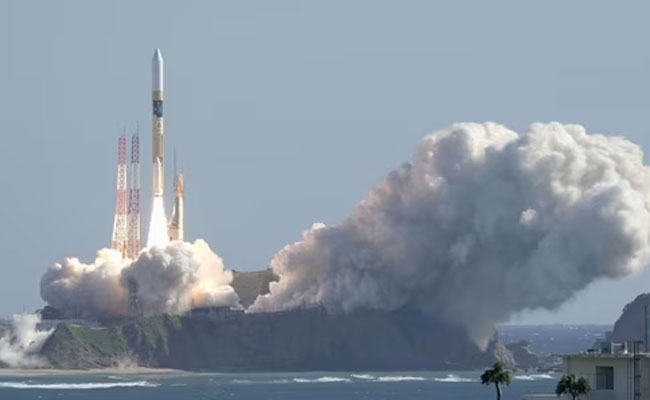Bengaluru (PTI): ISRO on Thursday congratulated the Japan Aerospace Exploration Agency on the successful launch of Japan's lander mission to the Moon.
"Best wishes for another successful lunar endeavour by the global space community," the Bengaluru-headquartered national space agency also said on 'X'.
Japan Aerospace Exploration Agency (JAXA) on Thursday launched a rocket carrying an X-ray telescope that will explore the origins of the universe as well as the Smart Lander for Investigating Moon (SLIM).
In fact, after the Chandrayaan-3 mission, ISRO's next likely Moon mission is in partnership with JAXA, a venture that's gathering steam.
Lunar Polar Exploration Mission (LUPEX) is a collaborative venture between JAXA and the Indian space agency.
JAXA and ISRO (Indian Space Research Organisation) are developing the rover and lander, respectively.
The rover will carry not only the instruments of ISRO and JAXA but also those of US space agency NASA and European Space Agency (ESA).
Vice-Chair of Japan's Cabinet Committee on National Space Policy and Director General, National Astronomical Observatory of Japan, Saku Tsuneta, visited the ISRO Headquarters here last month and had a meeting with the space agency's Chairman S Somanath, and discussed the progress of the LUPEX mission.
"Development of a smaller lander for the LUPEX mission was discussed, among other things," an ISRO official said.
According to JAXA, the LUPEX mission is aimed at exploring lunar polar region suitability for establishing a lunar base for sustainable activities; obtaining knowledge regarding availability of lunar water-ice resources, and demonstrating lunar and planetary surface exploration technologies such as vehicular transport and overnight survival.
Ahmedabad-based Physical Research Laboratory, an autonomous unit of the Department of Space, has proposed multiple instruments in the LUPEX mission mainly to carry out measurements at surface and subsurface near the permanently shadowed polar region of the Moon.
The objective of one of the proposed instruments -- Permittivity and Thermo-physical investigation for Moon's Aquatic Scout (PRATHIMA) is in-situ detection and quantification of water-ice mixed with lunar surface and sub-surface soil using a rover/ lander platform.
The aim of another proposed instrument -- Lunar Electrostatic Dust EXperiment (LEDEX) is to detect presence of charged dust particles and confirm the dust levitation process in volatile-rich polar region, and to estimate approximate dust size and flux of charged, levitated dust particles.
According to an ISRO official, the LUPEX mission is slated to be launched in the year 2025.
Let the Truth be known. If you read VB and like VB, please be a VB Supporter and Help us deliver the Truth to one and all.
Davanagere: Sri Rama Sene national president Pramod Muthalik has accused the state government of using the proposed Hate Speech and Hate Crimes (Prevention) Bill to target Hindus and to suppress Hindutva organisations and their leaders.
Speaking at a press conference on Saturday, Muthalik said the Sene opposes the Bill. According to him, the government is bringing this legislation only to appease Muslim voters while selectively targeting Hindu voices.
He questioned whether it is wrong to speak against cow slaughter when the ban is already in force but violations still occur in many places. “Is it wrong to raise awareness among Hindus about love jihad? Is it wrong to oppose illegal construction of churches, mosques or encroachments on cremation grounds? Is objecting to religious conversions wrong?” he asked.
Muthalik alleged that the Bill attempts to silence anyone who questions or protests such issues. He said the move goes against the spirit of the Constitution framed by Dr B.R. Ambedkar and is aimed at weakening the Hindu community.
He urged BJP and JD(S) MLAs to strongly oppose the Bill in the upcoming session and ensure it does not get passed. The organisation will submit memorandums to all legislators and mount pressure, he added.
During the press meet, Muthalik tore copies of the Bill in protest. Leaders of Sri Rama Sene including Parashuram Nadavinamani, Yashavanth, Sridhar and Madhu were present.





